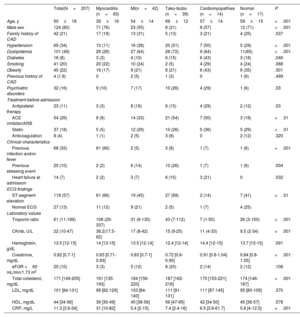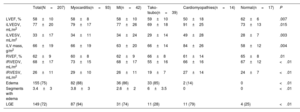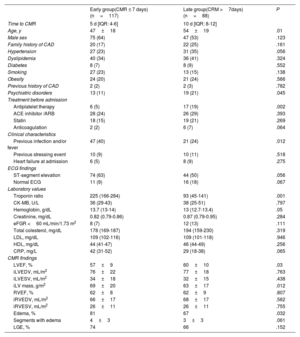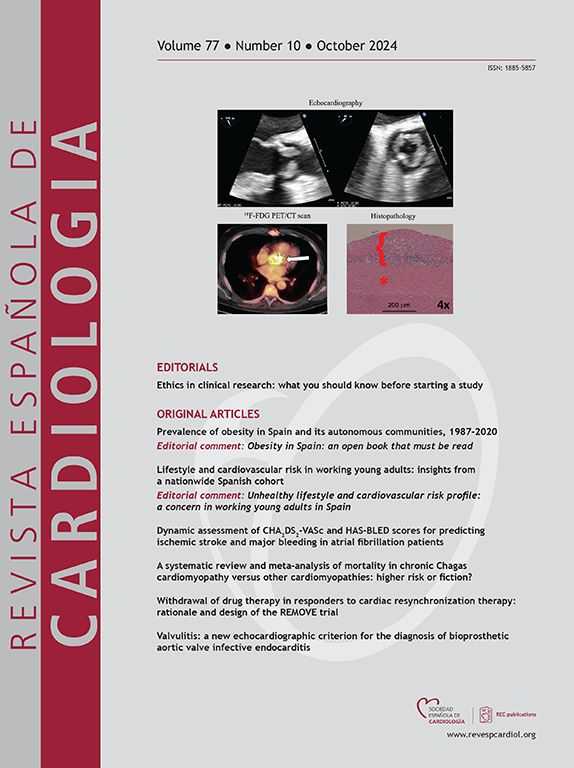
The present study sought to establish the diagnostic yield of cardiovascular magnetic resonance (CMR) in a large cohort of patients admitted with myocardial infarction (MI) with nonobstructive coronary artery disease (MINOCA) based on the timing of referral to CMR.
MethodsConsecutive patients referred to CMR from January 2009 to February 2022 with a working diagnosis of MINOCA were retrospectively evaluated. Cine, T2-weighted, early, and late gadolinium-enhanced images were acquired and analyzed. The frequency of the underlying diagnosis and the association between timing of CMR and relative frequency of each diagnosis were assessed.
ResultsWe included 207 patients (median age 50 years, 60% men). Final diagnosis after CMR was achieved in 91% of the patients (myocarditis in 45%, MI in 20%, tako-tsubo cardiomyopathy in 19%, and other cardiomyopathies in 7%). The performance of CMR within 7 days of admission with MINOCA (median, 5 days; 117 patients) allowed a higher diagnostic yield compared with CMR performed later (median, 10 days; 88 patients) (96% vs 86%, P=.02). Although myocarditis was the most frequent diagnosis in both groups according to time to CMR, its frequency was higher among patients with a CMR performed within the first 7 days (53% vs 35%, P=.02). The frequency of other underlying diagnoses was not influenced by CMR timing.
ConclusionsCMR led to an underlying diagnosis of MINOCA in 91% of patients and its diagnostic yield increased to 96% when CMR was performed within 7 days of admission. The most frequent diagnosis was myocarditis..
Keywords
Identify yourself
Not yet a subscriber to the journal?
Purchase access to the article
By purchasing the article, the PDF of the same can be downloaded
Price: 19,34 €
Phone for incidents
Monday to Friday from 9am to 6pm (GMT+1) except for the months of July and August, which will be from 9am to 3pm








